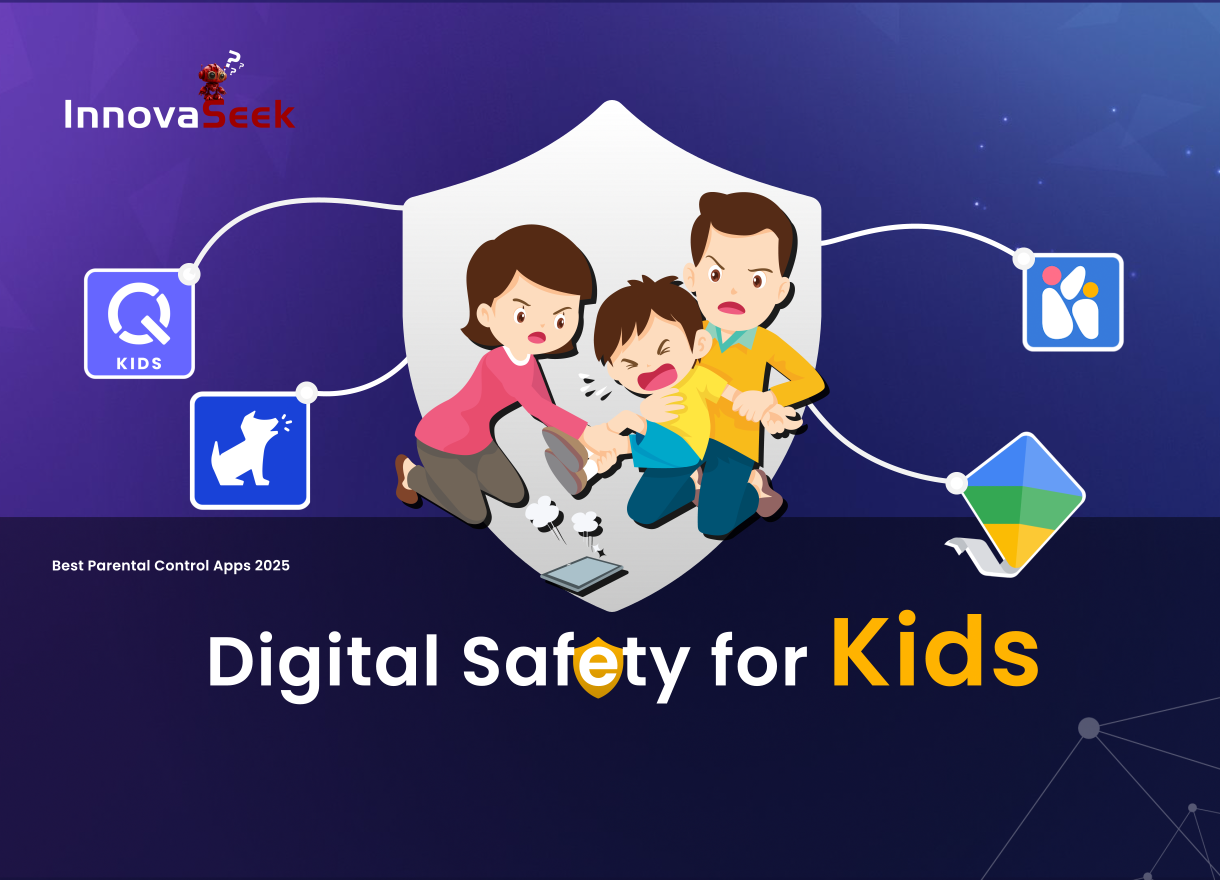Digital Safety for Kids: Best Parental Control Apps & Healthy Habits 2025
Navigating the Digital World: Why Child Online Safety is Crucial
In today’s rapidly evolving digital landscape, children are growing up surrounded by screens, social media platforms, and an endless stream of online content. While technology undoubtedly opens new avenues for learning, creativity, and communication, it also exposes children to significant risks such as inappropriate content, online predators, cyberbullying, and screen addiction. The answer isn’t to ban technology outright, but rather to find a balance. With the right tools and strategies, parents can empower their children to explore the digital world safely and responsibly.
The days when children’s digital exposure was limited to shared family television are long gone. Now, even toddlers can intuitively navigate tablets and smartphones. The challenge for parents in 2025 is to ensure their children’s digital diet is healthy, safe, and contributes positively to their development.
- Excessive screen time can be linked to behavioral issues, sleep disturbances, and a decline in academic performance.
- Unfiltered internet access poses a risk of exposing children to violent content, pornography, and harmful ideologies.
- Social media pressures often push younger users towards comparison, seeking validation, and can lead to cyberbullying.
Parents frequently find themselves in a dilemma: how to protect their children without stifling their freedom to explore and grow. This is precisely where technology itself can provide powerful solutions for child online safety.
Top Parental Control Apps for Digital Child Safety in 2025
For parents looking to gain more control and insight into their child’s digital life, these are some of the most effective parental control apps that help monitor, filter, and guide children towards safer online experiences.
- Qustodio: Comprehensive Monitoring & Screen Time Control
- Website: https://www.qustodio.com
- Key Features: Robust screen time limits, advanced website and app filtering, detailed activity reports, and a panic button feature.
- Best For: Parents seeking extensive multi-device monitoring across Windows, Android, iOS, macOS, and Chromebook.
- A free version is available for basic monitoring.
- Bark: AI-Powered Alerts for Online Risks & Cyberbullying
- Website: https://www.bark.us
- Key Features: Monitors social media, emails, and texts using AI to send alerts for signs of bullying, self-harm, predatory behavior, or other inappropriate content. Focuses on providing real-time alerts without being overly invasive.
- Best For: Parents who prioritize intelligent alerts about potential dangers across multiple communication platforms.
- Paid plans, but offers a 7-day free trial.
- KidCare: User-Friendly Parental Controls for Younger Children
- Website: https://kidcare.app (Assumed official)
- Key Features: Intuitive time management, app control, precise location tracking with geofencing, and a helpful study-time scheduler.
- Best For: Parents seeking a simple, effective interface and strong parental controls, particularly for younger children navigating their first digital devices.
- Offers a free basic plan with premium features available.
- Google Family Link: Free Digital Supervision for Android Users
- Website: https://families.google.com/familylink
- Key Features: Allows app approvals, sets device screen time limits, provides activity reports, and enables remote device locking.
- Best For: Parents primarily using Android devices who want a free and integrated solution for digital supervision within the Google ecosystem.
- Completely free.
- Norton Family: Integrated Security for Family Devices
- Website: https://family.norton.com
- Key Features: Strong web filtering, customizable time supervision, detailed activity history, and reliable location tracking.
- Best For: Families already utilizing Norton security products, offering a unified approach to online protection across various devices.
- Offers a free trial, then paid subscription.


Beyond Monitoring: Cultivating Healthy Digital Habits for Kids
While parental control tools are invaluable, true success in safeguarding children online depends equally on fostering open communication and building healthy digital habits. Technology is merely a tool; its impact depends on how it’s used and the discussions built around it. Here’s how parents can balance control with trust and establish a foundation for responsible digital citizenship:
- Open Conversations: Regularly engage your children in discussions about digital safety. Explain why monitoring is important and the potential risks they might encounter online. Instead of simply imposing rules, foster an environment where they feel comfortable discussing their online experiences, questions, or concerns.
- Set Clear Time Limits: Utilize the features within parental control apps or device-native tools to enforce realistic screen-time limits. Establish “screen-free” hours, especially before bedtime, to promote better sleep and focus on other activities.
- Establish Tech-Free Zones: Designate specific areas or times, such as the dinner table, bedrooms, or family outings, where devices are not allowed. This reinforces the value of face-to-face interaction and reduces constant screen dependency.
- Encourage Creative & Educational Use: Guide your children toward educational games, creative apps (e.g., coding, digital art, music creation), and safe learning platforms. Emphasize that technology can be a powerful tool for positive development and learning.
- Model Good Digital Behavior: Children are keen observers. Your own tech habits significantly influence theirs. Demonstrate balanced technology use, put your phone away during family time, and discuss your own digital choices openly.
Staying Updated as a Digital Parent in 2025
The digital landscape is constantly evolving. What’s safe and common today might be risky or outdated tomorrow. To effectively safeguard your children online in 2025 and beyond, it’s crucial to stay informed. Subscribe to reputable parenting and tech newsletters, follow child safety organizations, and maintain a curious and proactive approach to new digital trends. Remember: the goal isn’t just surveillance—it’s guidance and empowerment.
Conclusion: Empowering a Safer Digital Future for Children
Parental control apps and mindful digital habits are not about stifling freedom; they’re about creating freedom within secure boundaries. By wisely embracing technology and implementing smart, proactive strategies, parents can effectively protect their children from online dangers while simultaneously preparing them to be thoughtful, responsible, and resilient digital citizens.
Instead of fighting the screen, let’s teach our kids to master it and navigate the digital world with confidence and safety.




